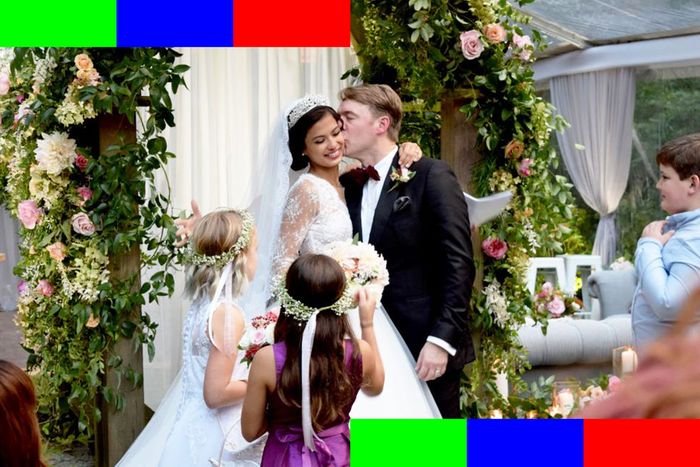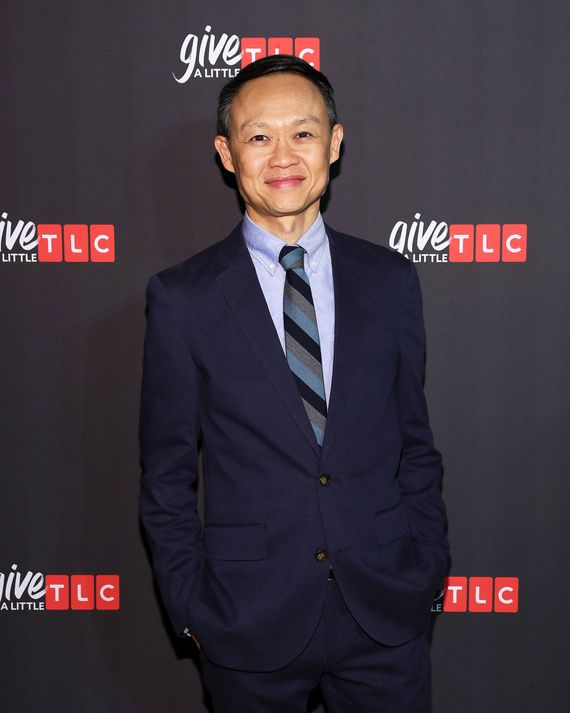
If you subscribe to a newsletter about the streaming business, you have likely already read the details about what happened at WarnerMedia back on August 7: WarnerMedia CEO Jason Kilar pushed out HBO Max chief Kevin Reilly as well as Reilly’s boss, WarnerMedia direct to consumer chairman Bob Greenblatt. Reilly’s job is now being done by Casey Bloys (who’s been successfully running HBO the past few years) and his new boss, Ann Sarnoff (who now oversees streaming and cable in addition to her previous job running Warners’ movie and TV studios.)
There’s no denying this was a major reorganization and one that few Hollywood insiders were predicting: Greenblatt came to WarnerMedia from NBC less than two years ago, Sarnoff had been in her previous job for barely one year, and Max signed on less than 100 days ago. This is exactly the sort of media shocker for which the word “boom” was created.
But I would argue that while the timing of Kilar’s moves was a surprise, the HBO Max-acre was a foregone conclusion the moment Kilar was hired last spring. To be blunt, there were simply too many senior executives overseeing the distribution of content at the company, and too many trying to do the same thing. Greenblatt and Reilly had both run major-network groups in past lives, and Bloys has basically been in charge of HBO since Richard Plepler exited the company at the start of 2019. While by all accounts Greenblatt, Reilly, and Bloys got along fine, I never quite understood why three execs with strong programming backgrounds were needed when the whole idea of Max was to create one central hub for the distribution of most WarnerMedia content.
Too Much Overlap?
Even though Reilly told me prior to Max’s launch that he and his program chief, Sarah Aubrey (who’s staying with the streamer), were looking to develop shows that complemented what was already on HBO, I’m not quite sure that’s what ended up happening. Plenty of projects put into development by the Max Originals team felt like they were going after the same prestige vibe for which HBO is known (like the Lupita Nyong’o limited series Americanah or the Lena Dunham–produced dramedy Generation). There were reports that agents weren’t always sure whether to pitch to HBO or Max, and even though Reilly had told me the Max and HBO teams sometimes heard pitches together, that fact alone underscores why Kilar was right to shake things up. If the goal is to have HBO and Max act in concert, you don’t need two teams operating independently.
This was all obvious when Kilar’s predecessor (and now boss), AT&T’s John Stankey, decided to push out Plepler and bring in Greenblatt to oversee both HBO and Max, while also giving Reilly his role at Max. It’s not that Greenblatt or Reilly were bad choices, per se. But since HBO was always meant to be the heart and soul of HBO Max, it never made sense to have folks from outside the HBO family running Max, with the HBO programming team playing a supporting role. In a perfect world, Plepler would have been charged with leading the transformation of HBO into HBO Max. But it’s not clear he wanted to do that, or if he did, whether Stankey trusted him to do so. Greenblatt was the compromise choice, but I think Kilar realized he — and Reilly — were simply extra layers of management, luxuries the company couldn’t afford in an era of consolidation.
Casey at Bat
Meanwhile, though he doesn’t get a ton of media attention, Bloys has proven himself more than capable of guiding the creative future of Max. It’s sacrilege in some quarters to suggest anyone but Plepler could manage HBO, but the fact is, Bloys has had a stellar run overseeing the network’s programming since taking over the top spot there five years ago. (He’s been at HBO since 2004.) In addition to the shows he green-lit when he ran comedy (such as Veep, Insecure, Ballers, and Silicon Valley), the Bloys era at HBO has seen the network (finally) move into programming for young adults (Euphoria) and move beyond Game of Thrones (with Watchmen, Big Little Lies, and Westworld). And this summer, HBO programs have dominated the pop-culture discourse, from I May Destroy You and Perry Mason to Lovecraft Country and the buzzy, just-launched docuseries The Vow.
In his new role, Bloys can make sure HBO keeps making shows that satisfy the current HBO base while overseeing Aubrey as she hunts for programming that fills niches that haven’t typically fit into the HBO brand, such as adult animation or projects based on Warner Bros. intellectual property.
What Others Are Saying
Some media critics have argued Kilar’s moves are defensive and a reaction to the admittedly messy launch of HBO Max. New York Times media columnist Ben Smith, for example, recently speculated the WarnerMedia reorg may be remembered as nothing more than “a clumsy attempt to mask the company’s remarkable failure in the streaming world,” and argued that Max has been an utter flop. “HBO Max has barely been able to compete with Netflix and Disney, despite having a service full of beloved shows and movies,” he wrote, contending the streamer “has primarily distinguished itself so far by its energetic and unsuccessful attempts to spin about 4 million people who have actually used the service into a number north of 30 million.”
Smith is pretty darn smart about the media, but I’m sorry, I don’t buy into the “Max is doomed” narrative. Rendering any sort of deep conclusions about the success or failure of a multibillion-dollar service backed by one of the world’s biggest media conglomerates barely three months in seems … hasty? For one thing, Smith is wrong to suggest Max is simply spinning when it rightly notes that the service’s subscriber base is closer to 36 million and not the 4 million who’ve specifically signed up for HBO Max since May. As I’ve written before, almost all of HBO’s 30 million or so U.S. subscribers are also part of the HBO Max subscription base. AT&T’s streaming model isn’t to have one group of HBO subscribers and another group of Max users. HBO subscribers are also being treated as Max subscribers — there’s no extra charge for Max — while people who sign up for Max have access to all HBO content via the Max app. When WarnerMedia said last year it hoped to have 50 million HBO Max subscribers by 2025, it wasn’t saying it planned to recruit 50 million new customers. Instead, it made it clear the plan was to add about 20 million new subscribers on top of the 30 million or so already paying for HBO. When WarnerMedia combines the existing HBO base and the new HBO Max signups into one number, that’s actually the whole point of the new product.
Not All Roses
All that said, I am not at all arguing the Max launch will be studied by future business-school students as an example of how to roll out a new streamer. It’s absolutely been messy. Some of the missteps weren’t the fault of Greenblatt or Reilly: The pandemic meant a bunch of programs scheduled for the early months of the service had to be scrapped, while also making it harder to market and promote the launch. Having four different products called “HBO” early on (Max! Now! Go! Classic!) wasn’t ideal, either. Where Max fumbled most was with its not particularly memorable or effective marketing campaign (the ads were not good — at all) and the absolute clusterbleep surrounding how consumers actually access the service.
AT&T clearly misjudged how serious Roku and Amazon were about keeping Max off the platform absent a deal that the tech companies found acceptable. The result is that many of those 30 million people who in theory are Max subscribers have had no easy way to watch the service on their TV sets. So not only did Max spend millions on not-great marketing, but many people who did see the marketing and actually decided to check out the platform have been left frustrated by their inability to do so. Absent those deals, Max should have quickly adjusted by spending much less on marketing and labeling the service a beta test. That would have reset consumer expectations (people understand if beta versions of a product aren’t easily available) while also allowing Max to build word of mouth while a deal got worked out. It also would have bought time for Max’s content-production pipeline to adjust to pandemic delays. As it is now, assuming deals with Roku and Amazon get done, Max will have to start all over again selling itself to consumers.
What’s Next?
Despite the shakiness of Max’s first few months, I’m actually much more bullish on its prospects than I was even a few months ago. Kilar’s decision to take bold action right away, rather than do the usual Hollywood thing where new execs “wait and see” how things shake out, demonstrates he understands how urgent it is for WarnerMedia to get Max established as one of the top four or five dominant streaming platforms. He essentially undid much of what his boss (Stankey) had done in setting up Max, and that, too, takes guts. I also think centering Max’s content engine around an HBO vet like Bloys is very much the right call for a platform with HBO branding. Max needs to make shows which wouldn’t make sense for the HBO cable network, yet still have the same sort of quality feel to them as stuff you’d find on the premium channel. I think he and Aubrey (who in another lifetime developed Friday Night Lights for NBC and The Leftovers for HBO) should work well together.
Success isn’t guaranteed, of course, but HBO Max now at least has a streamlined team in place ready to rejoin the battle.
Is 90 Day Fiancé the Show of the Summer?
Two of the biggest shows on TV don’t get the media love they deserve, in part because they’re on unfashionable linear platforms. Paramount Network’s Yellowstone has dominated cable ratings this summer, with last week’s season finale drawing over 5 million viewers — the most-watched cable telecast of the year. And over on TLC, various offshoots of the 90 Day Fiancé franchise have been crushing the competition in the network’s target demo of women under 55 of late, giving traditional summer ratings leader America’s Got Talent some serious competition.
Earlier today on Vulture, I posted a deep dive Q&A with TLC president Howard Lee, who developed the very first 90 Day show nearly seven years ago. We had a good conversation about why the show works and how it became a hit, and I hope you will check it out. A few nuggets I saved for newsletter readers:
• Buffering can exclusively report that TLC has green-lit a second season of The Family Chantel, the 2019 spinoff featuring breakout cast members from the fourth season of the original 90 Day Fiancé. There had been online speculation that a second season might not happen because of the pandemic, but not only has TLC ordered another season, it has a premiere date: Monday, Oct. 12 at 10 p.m. The first season of the show was TLC’s top-rated new series premiere in the network’s target demo.
• Lee told me that, for all the obituaries media writers have penned for linear TV, 90 Day has flourished because audiences like the experience of watching in (near) real-time and coming back week after week to the franchise. It’s also helped TLC launch new shows. “Many people will say, ‘The old linear model is gone,’ but I don’t believe that,” he says. “I believe that when people come to watch any one of our shows, they’re also expecting us to tell them about something else that’s fresh and new, that we think that they may want to check out. So very traditional, linear methods still work for us. 90 Days has been a lead-in to many other series. We’ve had sMothered. We’ve had Unexpected. And the marketing that airs within 90 Day drives an audience to check out shows on our other nights of family lineups, as well as Dr. Pimple Popper.”
• 90 Day doesn’t just beat cable shows: This summer, it’s been trouncing a number of broadcast reality shows in key demos. And yet, whenever I ask network suits why they don’t make niche shows such as the ones found on TLC or HGTV, they immediately say such shows are “too small” for broadcast. I asked Lee whether he thinks broadcasters are making a mistake by continuing to focus on broad-based concepts, and while he didn’t directly answer, I found what he did say interesting. “I see [TLC shows] as movies,” he said. “I tell our team [to] look at them as if they are features, to really hone into what’s going on in the mind of our talent. Dig into it. Dive into it. Sit on it. There is no rush. Viewers are investing their time with us, so … we don’t want to just slap it on screen. We pore over every frame, over every act: How is this episode ending? What are we revealing next week? Do the major broadcasts think about that in nonfiction? I’m not sure.”
Lee was too diplomatic to go after his broadcast peers, but I think the lesson of shows such as 90 Day is that the big networks continue to ignore their new reality: They’re quickly becoming what cable TV was five or 10 years ago. Sure, they can get older viewers to tune in for long-running hits, and everyone else to check out live sports and a few big events. But they have to accept that shows with only 3 or 4 million viewers are now part of their new normal. There’s no reason to ignore concepts like 90 Day because they feel too much like something you’d find on cable. Just put on shows which can attract a passionate, loyal audience — and then use your platform to build them into broader hits.
Parting Shot
“Why should we watch their reality show if it doesn’t reflect our reality?”
— Late Show host Stephen Colbert admitting during his must-watch Wednesday monologue that he hadn’t watched much of the night’s Republican National Convention programming. Instead of joking about RNC speakers, he spent his 15-minute open talking about the white militia murders in Kenosha, WI, and the CDC’s decision to change COVID testing guidelines in response to pressure from the Trump administration.



